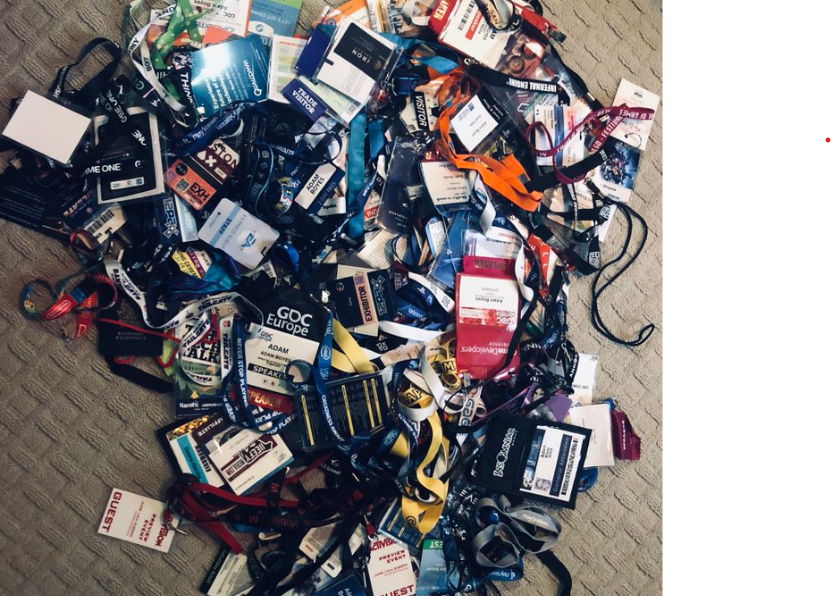This column is by Janet Stanton, Partner. Adam Smith, Esq.
The very (very!) good news is that IRL conferences are back. We recently attended two on opposite coasts just over the course of ten days What is definitely not so welcome is that lanyards are back as well.
Lanyards are supposed to facilitate introductions and connections at large professional gatherings. They frankly fail at their intended purpose – and, worse, are literally a pain in the neck; a complete lose-lose.
Let me explain…
For starters, I could not find any historical references as to when lanyards were introduced at conferences (nor could I find any individual cited for this unfortunate development). That said, at this point, lanyards are ubiquitous at large professional conferences.
That lanyards don’t work is plainly obvious. Unadjusted, they dangle somewhere in the vicinity of attendees’ belly buttons. And, just who is going to bend down and stare at the stomach of someone they presumably do not know? Some lanyards can be ratcheted up higher which represents an additional challenge (and source of unease) for the women in attendance. Further affiant sayeth not.
What lanyards excel at is getting all tangled up in your clothes and carryall straps – even your hair. They can also completely mess up a well-composed outfit. Moreover, lanyards are scratchy; at a recent conference, mine began to give me a rash (at which point I ditched it in the nearest trash bin).
So: lose-lose.
What’s to be done?
Name tags. And not the ones that clip on; they’re often a bit awkward, too – and, again are more difficult for women (full disclosure, I’m a woman and clip-on name tags just don’t work on, for example, dresses).
The best are the magnetized name tags. Each attendee can place it where it works and is comfortable for them, with no one staring at tummies, or worse. Am guessing that this is the most expensive option, but to repurpose an old ad line…attendees “are worth it.”
One final point…The sponsoring opportunity that lanyards represent to conference organizers need not be lost; name tags can also carry a sponsor’s logo (one that might actually be read!).
Without the long interregnum of the pox, I probably wouldn’t have given lanyards much thought; they were just a fact of life to be tolerated (like commuting but on a much smaller scale). But as the pandemic allowed us to rethink many (much more important) aspects of our life and work (like – do we even want to work, and if so where do we want to work?), we can also reassess the more minor sources of friction.
What else – large or small – can we rethink?




Great example of focusing on the true customer and that customer’s experience. The true customer are the attendees, not the conference organizers or any sponsors. Customer-attendees have a need to both present their information and gather that of others in the most user friendly, accessible process available — the magnetized name tag is a wonderful approach.
d’accordo! plus, name tags have to be more eco-friendly
Here we are writing what we thought would be a light piece for the post holiday doldrums (and the coldest weeks of the year, historically, in North America) and our friend Jeff comes up with a strategic nugget of insight in it. Thanks, Jeff!
BTW — at least as stupid are those ridiculous ribbons that seem to grow like kudzu at the bottom of the lanyard placard or even the magnetized name tags. A pox on these as well
Recycling soft plastic is a thing in my rural village. We are going to make a bench for the town square out of them. How about the Adam Smith, Esq. bench….with a double entrendre too.